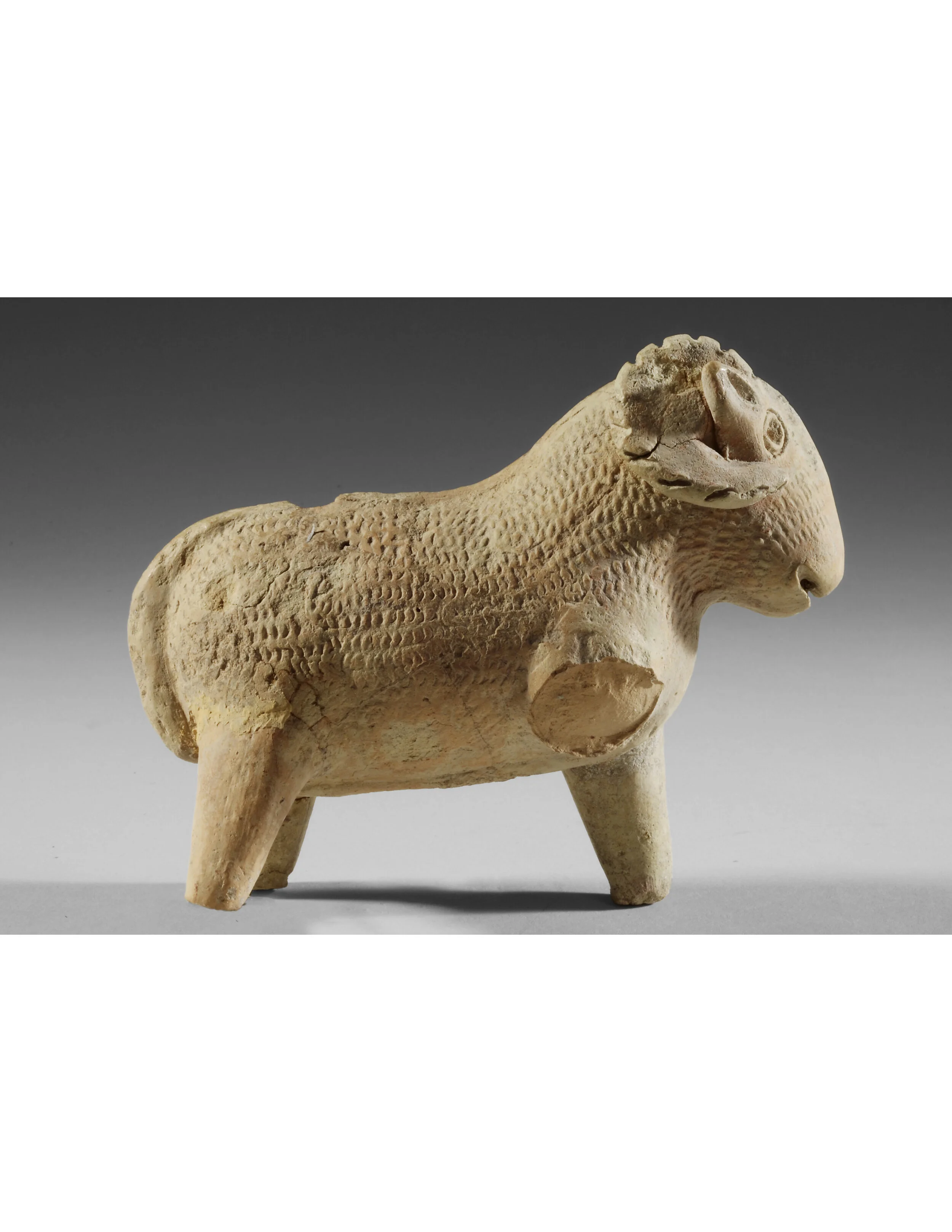Byzantine Terracotta Rhyton in the shape of a Goat




Byzantine Terracotta Rhyton in the shape of a Goat
Early Byzantine period, 5th century A.D.
Terracotta
H: 11 cm, W: 13 cm
Provenance: Acquired on the European art market, 1993.
Serial No: 947
This small terracotta animal is an anthropomorphic vase adopting the shape of a goat. Although simplified, the statuette is very realistic. The details of the fur were rendered by embossed reliefs on the belly, back, neck and muzzle of the animal. The horns curl around the ears while large round eyes and open mouths give the animal a caring and concerned expression.
A hole is made in the back of the animal and a second in the mouth. The main hole was used to introduce the liquid that filled the belly and flowed through the mouth. These small rhyta are usually interpreted as dishes used for the condiment of foods offered during meals (sauce-garum or olive oil). Anthropomorphic rhyta are typical of the Syro-Palestinian region. The first dishes of this type are found in the amorphous period (1200-600 BC). This tradition continues until the first Christian centuries, adapting the containers to the style of this period. The eyes are formed of a large round hole embedded in the ground and surrounded by a circle. The shapes are round and realistic. The rounded belly punctuates the muscles of the legs and shoulders, the tail emerges in relief in the axis of the spine, the head is a conical shape with rounded muzzle. The animals (horse, bull, sheep, goat, ...) are stocky and their legs are simple, without details of hoof or coat.
The piece was obtained by molding the animal: the two halves obtained were then "glued" by the potter whose work is still visible on the forehead of the animal.
The rhyton presents a good general state of conservation despite the restoration that brought together several broken pieces. One of the legs has disappeared.
Bibliography
WAMSER l, ZAHLHAAS G., Rom and Byzanz, Archæologische Kostbarkeiten aus Bayern, Munich, 1998, No. 168, p. 150.








